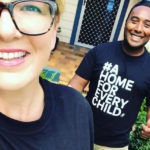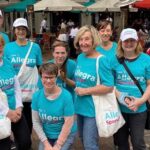Smartphones app for early detection of autism ASDetect: The inside story
Autism is a neurodevelopmental condition present in 1-2 % of the population. In an age of growing technology, can we detect early signs for autism for children between the age of 11 and 30 months using a mobile app? And if yes, how accurate is that technology? Dr Nancy Sadka from OTARC at La Trobe University knows more.
This is the inside story of how the academic and corporate world have joined hands to create an innovative technological solution that can impact on the lives of many families who are concerned about the development of their infant or toddler. ASDetect is a unique, evidence-based mobile app designed for parents, educators, and health professionals to identify autism very early in life. This story shows just what is possible when people put their hands up for research and join together to translate research outcomes into benefits for the community.
ASDetect began in 2006 when a PhD student named Josephine Barbaro began investigating the identification of behavioural markers for autism in infants and toddlers under the supervision of Professor Cheryl Dissanayake, Director of the Olga Tennison Autism Research Centre at La Trobe University (OTARC). Together, they created a developmental surveillance approach known as the Social Attention And Communication Study (SACS) to monitor the early signs of autism at 12, 18, and 24 months of age during children’s routine health checks by their Maternal and Child Health Nurse (MCHN). This research led to the establishment of a long-term research program on the early identification of Autism in community-based settings in Australia and overseas, supervised by Dr Barbaro.
The logistics of implementing the research – 20 councils and over 350 Maternal and Child Health Nurses (MCHN) participated in the SACS. Dr Barbaro trained the Nurses on the early signs for ASD and to date over 30,000 families have agreed to have their children monitored by SACS/R. A team of administrators, intake officers, lab managers, IT technicians, and coordinators at OTARC facilitated the logistics of the implementation and volunteers have logged so far over 3,000 hours to build capacity in this ambitious research program.
Methods and Results – Over the last 10 years, a group of 18 clinicians including psychologists, speech pathologists, researchers, a medical doctor, and PhD candidates conducted developmental and diagnostic assessments for children referred to the SACS/R team with a “high likelihood” for autism. The children were then assessed at 6-monthly intervals at OTARC’s Child Development Unit, to date clocking in over 10,000 hours of assessments.
A consistent finding is that 81% of the children referred by the MCHNs receive a diagnosis of ASD by the age of 24 months, with the remaining children (19%) having either developmental and/or language delays. The SACS, which is tailored to the age at which the child is monitored, yields an accurate identification of children with a “high likelihood” of a diagnosis of autism.
The creation of ASDetect – The average age of diagnosis of autism in Australia is currently 4.1 years of age. At OTARC, we wanted to ensure that our research in early identification of autism is more widely accessible. We formed a partnership with Salesforce, who came on board to build a mobile app through their 1-1-1 philanthropy model. Salesforce developers from three different continents, who had never met before, with the team at OTARC and other colleagues at La Trobe University, put their hand up to build ASDetect.
At the time of writing and less than one month after the launch, ASDetect had been downloaded close to 6,000 times. It is remarkable to see what unique solutions can be accomplished when vision, strong research evidence, hard work and, most of all, people’s time and generosity come together. It can impact on the lives of many!
Dr Nancy Sadka is a Research Fellow at the Olga Tennison Autism Research Centre (OTARC) at La Trobe University in the early identification and diagnosis of autism.
Associate Professor Josephine Barbaro is a Principal Research Fellow and Psychologist at the Olga Tennison Autism Research Centre (OTARC) at La Trobe University in the early identification and diagnosis of autism.













